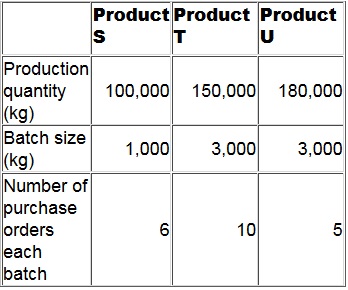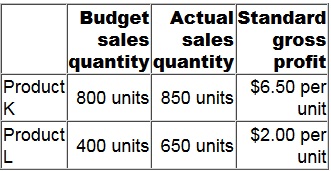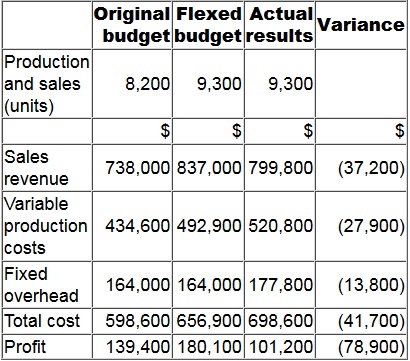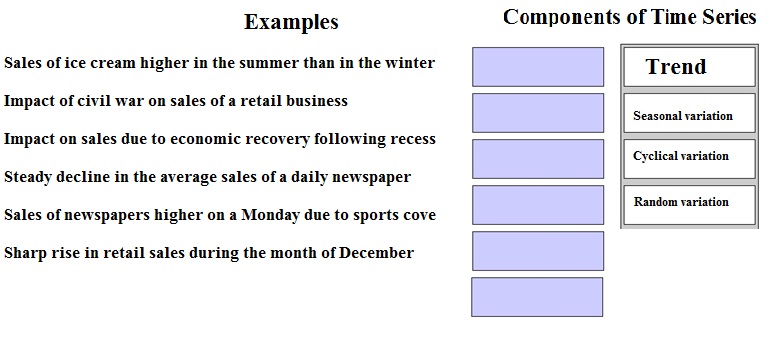CIMA P1 - Management Accounting
An agricultural company uses activity based costing to charge overheads to its three products. One of the main activities is purchasing, budgeted details of which are as follows:
Additional budgeted data:

What is the budgeted purchasing overhead cost per kg of Product S?
Give your answer to 2 decimal places.
A company produces a product that requires two materials, Material A and Material B. Details of the material quantities and costs for August are given in the table below.

Budgeted and actual output of the product for August was 12,000 units.
The material yield variance for August is:
A company uses a standard costing system.
The company’s sales budget for the latest period includes 1,500 units of a product with a selling price of $400 per unit.
The product has a budgeted contribution to sales ratio of 30%.
Actual sales for the period were 1,630 units at a selling price of $390 per unit.
The actual contribution to sales ratio was 28%.
The sales volume contribution variance for the product for the latest period is:
The following information is available regarding a company's two products for last period.
What is the favourable sales quantity profit variance for last period?

Give your answer to the nearest whole $.
The budgetary control report of XYZ for the latest period is shown below. Variances in brackets are adverse.

What is the sales volume profit variance?
JL is preparing its cash budget for the next three quarters. The following data have
been extracted from the operational budgets:

Additional information is available as follows:
• JL sells 20% of its goods for cash. Of the remaining sales value, 70% is received within the same quarter as sale and 30% is received in the following quarter. It is estimated that trade receivables will be $125,000 at the beginning of Quarter 1. No bad debts are anticipated.
• 50% of payments for direct material purchases are made in the quarter of purchase, with the remaining 50% in the quarter following purchase. It is estimated that the amount owing for direct material purchases will be $60,000 at the beginning of Quarter 1.
• JL pays labour and overhead costs when they are incurred. It has been estimated that labour and overhead costs in total will be $303,600 per quarter. This figure includes depreciation of $19,600.
• JL expects to repay a loan of $100,000 in Quarter 3.
• The cash balance at the beginning of Quarter 1 is estimated to be $49,400 positive.
Required:
Prepare a cash budget for each of the THREE quarters.
What will the closing balance of cash flows in quarter THREE be?
Place the components of the time series next to the example about the impact on sales that they best represent.

A company uses an activity based costing system. The company manufactures three products, details of which are given below:

A company operates a customer complaints department.
How will the cost of the customer complaints department be classified in a system focussed on quality related costs?
Which of the following explain why standard costing is less appropriate in the contemporary business environment?
1. In a continuous improvement environment standard costing can restrict the impetus to remain as cost competitive as rivals.
2. Fixed overhead variances are less relevant as fixed costs represent a decreasing proportion of total manufacturing cost.
3. In a just-in-time environment there are fewer costs to control.




